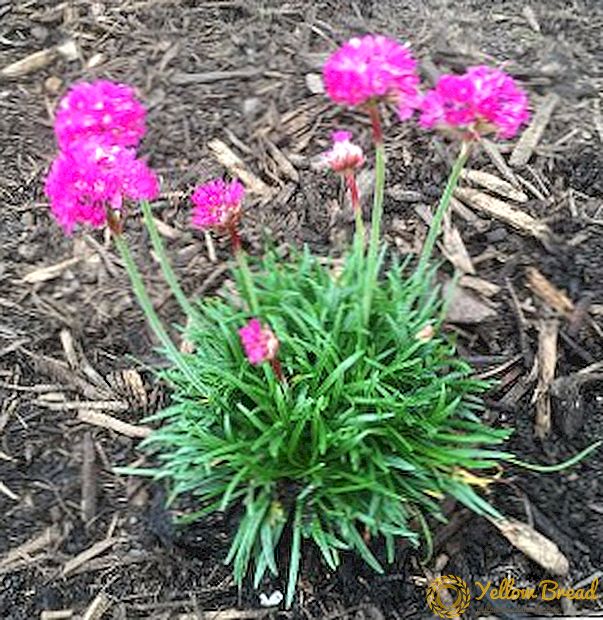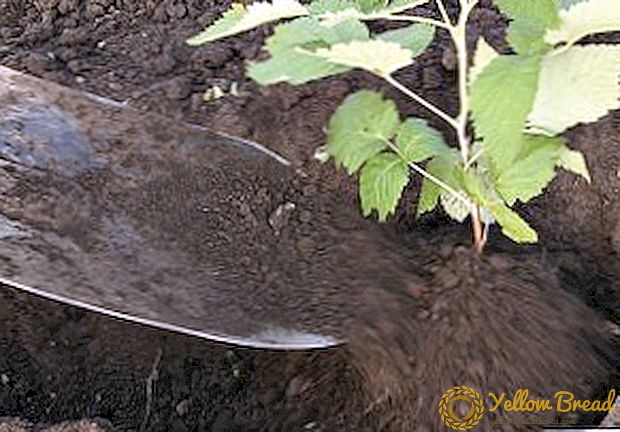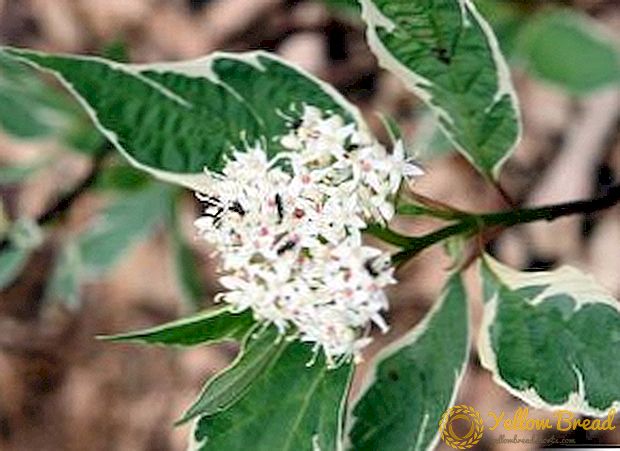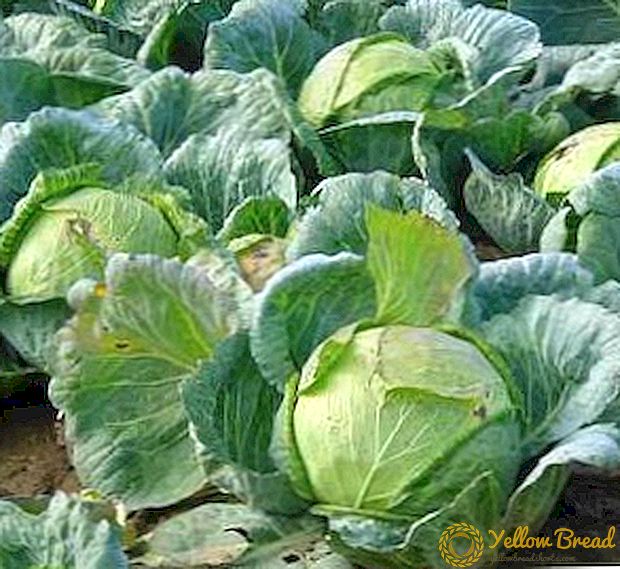 Goat is a popular pet that provides high-quality, healthy milk. It is unpretentious, adapts well to any conditions, eats almost all food, finds food easily and, with proper care and conditions, does not cause problems. Goats are rarely ill, but you need to know how to establish what the animal does not feel well and what to do to treat it. This will be discussed in this article.
Goat is a popular pet that provides high-quality, healthy milk. It is unpretentious, adapts well to any conditions, eats almost all food, finds food easily and, with proper care and conditions, does not cause problems. Goats are rarely ill, but you need to know how to establish what the animal does not feel well and what to do to treat it. This will be discussed in this article.
- Noncommunicable diseases
- Avitaminosis or hypovitaminosis
- Gastroenteritis
- Dyspepsia
- Pneumonia (pneumonia)
- Ketosis
- Mastitis
- Poisoning
- Acute tympania
- Rheumatism
- Injuries
- Cracked nipples
- Udder furunculosis
- Infectious diseases
- Brucellosis
- Infectious pleuropneumonia
- Infectious mastitis
- Necrobacteriosis (hoof disease)
- Footrot
- Foot and mouth disease
- Parasitic diseases
- Dictyocaulosis
- Linognetosis
- Moniesiosis
- Piroplasmosis
- Strongylosis
- Fascioliasis
- Echinococcosis
Goat diseases can be divided into non-infectious, infectious and parasitic.
Noncommunicable diseases
These diseases can occur due to injury, improper or inadequate nutrition, poor-quality feed, poisoning by toxic plants or pesticides, with inadequate care and lack of hygiene.
A healthy goat is always vigorous, with a good appetite.Normal heartbeat 70 - 80, breathing 15 - 20 per minute, temperature 38.5 - 40 ° C, up to 41 ° C in kids.
If a goat has lost milk, there is rapid heartbeat, fever and poor appetite, it means that it is unhealthy and it is necessary to find out what is the cause of the disease. 
Avitaminosis or hypovitaminosis
Avitaminosis usually occurs in kids and young animals due to lack of vitamins (A, D less often B, C, E) and minerals.
Vitamin deficiency is expressed in slower growth of livestock, deterioration of appetite, uncertain walk, convulsions, refusal of legs. In adult animals, there is a deterioration in reproductive functions.
Treat it by replenishing the lack of the necessary vitamin. So, vitamin A is replenished with fish oil, carrots, good hay, additives containing retinol, vitamin B is in bran, germinated grain, carrots.
Rachitis is often observed in kids (vitamin deficiencies), they weaken, start to limp, bones easily bend, diarrhea or constipation occur. There is a lot of vitamin D in milk, meat and bone meal, yeast.
In acute cases, the veterinarian prescribes the introduction of the necessary vitamins intramuscularly.To prevent this disease, it is necessary to walk more often kids, give a variety of food, including feeding goats, and the room for their maintenance should be dry and well ventilated. 
Gastroenteritis
The cause of inflammation of the mucous membrane of the stomach and intestines, according to scientific - gastroenteritis, can be:
- bad feed:
- rotten potatoes or beets;
- moldy bread, crackers, waste grain or oilcake;
- feed containing heavy metals;
- a sharp transition of young animals to vegetable food;
- when feeding goats with goat's milk, a patient with mastitis.
When the disease in goats decreases and appetite disappears, diarrhea or constipation occurs, feces have a lot of undigested food and lumps of mucus, but blood is rare, the smell of waste is very unpleasant, and when pressed on the stomach, the animal bleeps plainly. All this is accompanied by fever and rapid breathing.
 The intestine can be washed by making an enema with slightly warm water and activated charcoal. After washing, the intestines are disinfected with salol (3-8 g), dissolved in chamomile broth, it is still advisable to give some astringent, for example, 3-5 g of tannin.
The intestine can be washed by making an enema with slightly warm water and activated charcoal. After washing, the intestines are disinfected with salol (3-8 g), dissolved in chamomile broth, it is still advisable to give some astringent, for example, 3-5 g of tannin.As a treatment prescribed by a veterinarian, antibiotics and sulfa drugs are used.
Dyspepsia
Dyspepsia - often occurs in newborn goats. Occurs due to poor diet of goats in the last stage of pregnancy and after childbirth, which causes deterioration of milk.
As a result, the kids digestion deteriorates, metabolism worsens and dehydration and accumulation of toxins in the body develop.
Manifested in the form of lethargy in kids, refusal of food, diarrhea with a strong unpleasant smell of gray-yellow color, the temperature can be below 38 °. It is necessary to treat quickly, otherwise for 4 days lambs may die.
Sick isolate and from 6 to 12 hours do not feed. Then they drink boiled water or an aqueous solution of sodium chloride. After improving the condition of the animal is allowed to the udder. If necessary, apply sulgin or phthalazole. 
Pneumonia (pneumonia)
Pneumonia rarely occurs on its own, usually the effects of another illness or stress - hypothermia, overheating, etc., which leads to a decrease in immunity. Inflammation of the lungs can be caused by poor nutrition and lack of vitamin A.
Symptoms are similar to those of most diseases: lethargy, depression, loss of appetite, cough, wheezing in the lungs, mucus comes from the nose, then pus, the temperature rises, rapid breathing, high pulse.
Sick animals are isolated in a well-ventilated, dry room. Translated into high-quality feed. To replenish vitamins, you can inject solutions of vitamins A and D subcutaneously, kids are given fish oil.
It is treated with norsulfazole (0.05 g per kilogram of animal weight twice a day) and penicillin (200,000-500,000 units daily during the week). 
Ketosis
Ketosis, or acetone - most often the manifestation of this disease can occur in a goat during pregnancy and is associated with improper feeding, lack of hay feed and excess concentrates. This leads to metabolic disorders and the occurrence of acetonemic syndrome in the animal.
The first sign of ketosis is a decrease or lack of appetite, drowsiness, lethargy of movements, there is a characteristic smell of acetone from the mouth, a slow reaction,there are constipations, there is a rapid breathing and heartbeat.
It is necessary to normalize the level of glucose in the blood. For this purpose, complex vitamins and microelements are used, sodium gluconate, 10% glucose solution is administered intravenously to the animal, sodium lactate, chlorinol, propylene glycol are given with food. To reduce the acidity in the stomach, goats are given baking soda. 
Mastitis
Udder mastitis or inflammation is a disease caused by an inflammation of the breast. The cause of which may be improper milking, udder injuries, poor maintenance in unsanitary conditions or cold rooms. There are at least four mastitis, but microbial infection is the basis of all.
The first sign of mastitis is swelling of the udder, the diseased part of the udder hardens and becomes hot, and in milk, if it still goes, flakes and even pus appear.
Treatment of mastitis in goats at home is reduced to reducing the tumor and the normalization of lactation. To reduce the milk yield, the goat changes the diet, removes succulent feed, gives a laxative (2 tablespoons of Glauber's salt per 200 g of vegetable oil per half liter of water).
To facilitate the condition of the animal, milking is often carried out, massage is performed, if necessary, with novocaine, camphor oil or ichthyol ointment is rubbed into the udder and wrapped in a warm one. In severe cases, antibiotics are used. 
Poisoning
Usually occurs when eating hay with a high content of pesticides or toxic plants. Most often this occurs when grazing, at least - at watering holes polluted with toxic runoff.
Symptoms depend on the poison in food, it can be:
- severe indigestion - refusal of food, vomiting, diarrhea, constipation;
- rapid pulse and breathing;
- weakness, lethargy, lethargy, depression;
- damage to the nervous system - convulsions, deterioration or loss of vision, stupor, paralysis, etc.
Treatment of poisoning is primarily in the cleaning of the digestive system. Animal probing washed the stomach, give a laxative, activated carbon, mucous broth. Provide drinking. If it is known what exactly poisoned the goat, apply the desired antidote.
Acute tympania
Tympania or acute bloating of a goat requires immediate treatment, otherwise it is fatal. It occurs in violation of belching and accelerated generation and accumulation of gas in the rumen.
The reason is improper feeding, for example, by feeds that cause strong fermentation, or by feeding legumes on a wet pasture, or by watering while eating juicy feeds.  The main symptom is a very swollen belly, in addition, the goat stops chewing, looks around all the time.
The main symptom is a very swollen belly, in addition, the goat stops chewing, looks around all the time.
What to do if a goat has a swollen belly. Well, firstly, you need to immediately deprive the animal feed. Then they try to release the gases, placing the goat vertically on the hind hooves, doing a belly massage.
They try to restore the belching, stretching out the tongue at the goat and sticking twisted straw into her mouth. You can spend sounding.The animal is given a solution of creolin, ammonia (2 teaspoons per liter of water) or ichthyol. In the most extreme case, you can pierce the scar with a trocar in the zone of the hungry fossa.
Rheumatism
In goats, articular and muscular rheumatism are distinguished. The cause of both is keeping livestock in cold, wet conditions.
With muscular rheumatism, they become stiff, dense, and touch causes a painful reaction. Articular rheumatism leads to a swelling of the joints, lameness, fever, decreased appetite.
In the first case, camphor alcohol is rubbed into the affected areas of the body, in the second case they are rubbed with ointment from turpentine, vegetable oil and ammonia (mixed in a ratio of 5: 5: 1) and salicylate is given inside sodium 0.3-0.5 g. In both cases goats transferred to a dry room. 
Injuries
In the case of an open wound, it is washed with a weak solution of potassium permanganate, stop the bleeding, smeared with iodine and sprinkled with naphthalene.
At the turn of the hoof, a bandage is applied and firmly tied up, limiting the movement of the affected animal.A severe bruise is treated by cutting the hair on the affected area, then smeared with iodine and bandage.
If a foreign body, a stone or splinter, gets into the hoof gap, it is removed by cutting off an extra horn, and the inflamed area on the hoof of the goat is washed and disinfected.
Cracked nipples
Cracks on the surface of the nipples occur when poor milking, with unclean content, in the presence of poor quality, coarse litter.
Detect them during milking. In the advanced case, they can lead to mastitis.
To cure a goat, its udder is treated with an aqueous solution of boric acid, and then smeared with petroleum jelly or melted butter.  For the speedy healing of cracks, you can attach a cut leaf of aloe, a compress of tincture of nettle leaves with alcohol, a mixture of boiled vegetable oil and wax, ointment of propolis or Solcoseryl.
For the speedy healing of cracks, you can attach a cut leaf of aloe, a compress of tincture of nettle leaves with alcohol, a mixture of boiled vegetable oil and wax, ointment of propolis or Solcoseryl.
Udder furunculosis
Furunculosis occurs in goats during lactation with the wrong content. Hair bags and sebaceous glands in the skin of the udder become inflamed and fester.
The main symptom of the disease are metastases of various sizes on the surface of the udder, in the middle of which is the hair root. The skin gradually turns red or yellow.
These areas are dense to the touch and cause pain in the goat when touched. Pus from such boils, falling on the adjacent areas of the skin, causes the appearance of new ulcers.
When treating this disease in a goat, the hair on the udder is cut, the skin is washed with warm water and soap and disinfected, the dried crusts of boils are removed, and then they are all treated with iodine. 
Infectious diseases
The cause of these diseases are pathogenic microorganisms that enter the body of an animal with food, through skin damage or other means, some of which are dangerous to humans.
Brucellosis
Brucellosis is an infectious disease caused by the bacterium Brucella melitensis. Infection most often occurs through damage to the skin during milking, through food and sexually.
Externally, the disease in goats practically does not manifest itself, the symptoms can be considered frequent miscarriages, often occurring without consequences for the animal, and swelling of the testes in goats.
Accurate diagnosis of the disease is possible only after a blood test. As a rule, brucellosis is determined after the disease of humans. A person becomes infected most often through milk or cheese, less often during the care of animals and the provision of obstetric and veterinary care.  Goat brucellosis is not treated. Sick animals are slaughtered, and their housing is disinfected. The fight against the disease consists of checking the herd twice a year and purchasing proven animals.
Goat brucellosis is not treated. Sick animals are slaughtered, and their housing is disinfected. The fight against the disease consists of checking the herd twice a year and purchasing proven animals.
Infectious pleuropneumonia
The causative agent of the disease is a virus-microplasma that affects the lungs and pleura. The disease is very contagious, acutely occurring, young goats up to 3 years old are susceptible to it.
The pathogen is excreted with cough, nasal mucus and urine. Infection occurs from sick or already ill animals. The incubation period is from a week to 24 days.
The disease manifests itself as a rapid rise in temperature (it does not decrease during the time of illness), the animal falls into depression, stops eating, gum disappears,there is a muscle tremor, a dry cough appears, turning into a wet, abundant mucus from the nose, the goat breathes hard, hoarsely.
In the super-acute form, the blood is infected and the beast dies in 12-16 hours. Special treatment does not exist, in the normal course the disease disappears in 3-5 days.
Sick goats are isolated, and the room is disinfected. In the external environment, the virus is unstable, easy to disinfect. Of the drugs in the initial stage of the disease gives good results Novarsenol.
It is mixed with a 25% glucose solution in a ratio of 1:25, a dose of 0.1 per 10 kg of animal weight. It is desirable to additionally give heart remedies. 
Infectious mastitis
Acute infectious disease, occurs when a pathogenic pathogen enters the uterine uterus, goat s is the main cause of goats.aureus (the others do not cause such an acute form of infection), which leads to inflammation, often gangrenous, of the mammary glands, which leads to death, sometimes in 80% of cases.
Milk-giving uterus, often giving birth for the first time, are ill. Sick or ill animals become the source of infection.
The disease is diagnosed by udder swelling, the affected lobe becomes solid, becomes blue-violet.
Milk disappears from a goat, a watery liquid begins to stand out from the udder, then pus with blood goes. The goat's temperature rises, it becomes lethargic, stops eating, there is no gum.
Sick uterus is isolated in a warm room. Change the diet to reduce milk flow. Milk is often sown, after having made an udder massage with novocaine (Novocain is mixed with vaseline and boric acid in a weight ratio of 1: 20: 4).  Periodically, the udder can be lubricated with camphor and heated. At the onset of the disease, penicillin, erythromycin is used intramuscularly, norsulfazole is given orally, streptomycin or other antibacterial drugs are injected into the udder.
Periodically, the udder can be lubricated with camphor and heated. At the onset of the disease, penicillin, erythromycin is used intramuscularly, norsulfazole is given orally, streptomycin or other antibacterial drugs are injected into the udder.
Necrobacteriosis (hoof disease)
This disease affects the hoofs of goats - the intergame cleft, nimbus, crumbs. The source of infection is sick and ill cattle, which produce pathogens with feces, saliva and dead tissue. Microorganisms penetrate through the wounds and scratches on the skin and mucous membranes.
Sick animals begin to limp, hoof tissues swell, pus starts to stand out from them, in case of neglect a horn shoe can separate, lesions appear on the mucous membranes of the mouth (scab), the goat loses its appetite. Sick animals need to be kept in a dry place.
Necrobacteriosis is treated with complex measures, disinfect the affected areas, use means that strengthen the immune system, give long-acting antibiotics - Cobactan, Terramycin. If necessary, make a surgical intervention.
To avoid infection with necrobacteriosis, you should not graze cattle on wet pastures and water from the marshes. 
Footrot
The causative agent is Bacteroides nodosus wand, it can live for up to five years in ungulate tissue, outdoors for 15 days, so livestock are the main hawkers. With this chronic disease, the horn of the hoof rots, its base and walls exfoliate.
Sick goats begin to limp, press and lick their feet.In the inter-kicking space, the skin turns red, inflammation begins, the hair falls out, and swelling appears.
Purulent discharges are formed on the skin with an unpleasant odor; the animal stops feeding and loses weight. In the advanced stage gangrene can develop.
Sick isolate in a dry room. If necessary, surgically remove the affected tissues of the hoof. The affected hoof is washed with disinfecting solutions, for example, it is dipped into a container with 10% formalin solution for 5 minutes. Then apply antibiotic treatment.
For the prevention of hoof healthy animals treated with creolin. Crib treated with chloramine. Infected pasture becomes suitable after two weeks. 
Foot and mouth disease
Acute infectious disease of cattle caused by RNA virus. Passes in an acute form, spreads extremely quickly, infection occurs from other animals, through pastures, places of detention and personnel.
Kids are particularly affected, up to half of them die, often infected through milk, personnel and care products. The virus actively multiplies in the epithelium, and then throughout the body. In goats, the hooves are mostly affected, less often the udder.
In case of a disease, redness, swelling, then sores and ulcers also occur on the udder and in the mouth, a gluten liquid oozes from the sores.
The goats begin to limp, drooling is observed, their temperature rises, lethargy and depression appear, appetite is lost, and milk yield drops sharply.
There is no special treatment. The main task is to prevent further spread of infection. Sick goats are immediately isolated. Milk is boiled. The premises are disinfected with a hot (750 ° C) solution of iodine monochloride.  Ill give light food, mouth washed with a weak solution of potassium permanganate several times a day. The affected areas are treated with a disinfectant solution, hoof smeared with heated birch tar. Animals recover after a week and become immune to foot and mouth disease.
Ill give light food, mouth washed with a weak solution of potassium permanganate several times a day. The affected areas are treated with a disinfectant solution, hoof smeared with heated birch tar. Animals recover after a week and become immune to foot and mouth disease.
Parasitic diseases
These diseases are also contagious, but are caused by organisms parasitizing inside or on the skin of livestock.
Dictyocaulosis
Dictycaulosis is caused by a filamentous worm, a nematode parasitic in the trachea and bronchi. Infection occurs through food or drink containing the parasite larvae.
In infected livestock, appetite is getting worse, lethargy appears, an ever-increasing dry cough begins, and mucus from the nose becomes friable. Edema appears, anemia begins.
Ultimately, the goat dies from exhaustion or asphyxiation. The final diagnosis can be made by detecting the eggs of the worms during the stool microanalysis.
Dictiocaulosis is treated with an aqueous solution of iodine, 1 g of crystals in 1.5 liters of water. He is injected with a syringe into the trachea. Dosage for adults - 10 + 12 grams, for kids and young animals - 5-10 g.  Another effective 25% aqueous solution of Ditrazina, administered intramuscularly or subcutaneously twice a day, dosage of 0.1 g per kg of body weight.
Another effective 25% aqueous solution of Ditrazina, administered intramuscularly or subcutaneously twice a day, dosage of 0.1 g per kg of body weight.
Linognetosis
A very common disease caused by lice. Infection occurs through direct contact with sick animals or when sharing items of care.
With the disease, goats begin to itch, decrease appetite, decrease milk yield, in advanced cases, hair falls out and extensive dermatitis forms in the area of the decompression, neck and head.
During treatment, it is necessary to disinfect the room.To combat lice, various insecticides are used: foxim, karbofos, chlorophos, perolom, insectol. The processing of the room where livestock is kept, and the animals themselves, is carried out twice with a break of 10-14 days. 
Moniesiosis
This disease is caused by tapeworms that live in the small intestine. Infection occurs during grazing on pastures, usually in spring or autumn: together with grass, animals swallow oribatid mites - carriers of helminths.
In sick goats, the symptoms appear about a month after infection: they become lethargic, lose weight, their appetite decreases and their hair grows dull, the stool becomes unformed with a lot of mucus, sometimes with clearly visible fragments of helminth.
This disease is especially dangerous for kids: with a strong infection, they can die because of intestinal obstruction.
Albendazole, camberndol, copper sulfate, panacure, fanadec, fenalidone, fenasal are used in the treatment.
Piroplasmosis
The causative agents of piroplasmosis are protozoan parasites that affect red blood cells. Infection occurs when a tick carrier bite.
In an infected animal, the temperature rises and the pulse quickens, yellowing of the mucous membranes is noted, appetite disappears, diarrhea and blood are observed in the urine, and anemia develops.  Sick animals are isolated and provided with high-quality dietary foods. Specifically treated with diamedine and azidine. Symptomatic treatment is also performed.
Sick animals are isolated and provided with high-quality dietary foods. Specifically treated with diamedine and azidine. Symptomatic treatment is also performed.
Strongylosis
Strongylosis is caused by roundworms, parasites infect the digestive system of animals: the stomach and intestines. Parasites enter the body with contaminated feed or water.
In this disease, dermatitis, gastroenteritis, diarrhea, pneumonia sometimes develop. Dims and falls wool.
Treat antihelminthic drugs and immunostimulants. Phenothiazine is effective.
Fascioliasis
Infection with this disease occurs when grazing in pastures. It is caused by flat worms of the genus Fasciola, which infect the liver and bile ducts.  A sick goat has an icteric appearance, unstable stool (constipations are replaced by diarrhea), swelling is observed on the chest and lower jaw, and anemia develops over time. The kids temperature rises.
A sick goat has an icteric appearance, unstable stool (constipations are replaced by diarrhea), swelling is observed on the chest and lower jaw, and anemia develops over time. The kids temperature rises.
They are treated with anthelmintic drugs, in particular, Fascoderm, Acemidophen, Dertil, Acetvicol, Fazinex, Urovermite. At the same time disinfect the room where livestock is kept.
Echinococcosis
The cestode larva that causes this disease affects the internal organs: lungs, spleen, liver, kidneys. It is dangerous not only for cattle: a person can also become infected.
In the early stages, the disease does not manifest itself, in the later stages - with lung lesions, breathing becomes difficult and a slight cough appears, with jaundice of the liver, jaundice develops. Possible diarrhea. There is no cure.
Despite the wide range of diseases in goats, all this can be avoided if you follow a number of measures, give balanced, proven fresh feed, keep in proper conditions, graze on proven pastures, acquire livestock, examined for infection.  All these measures will help the farmer avoid losses, and you will not lose a useful pet.
All these measures will help the farmer avoid losses, and you will not lose a useful pet.






